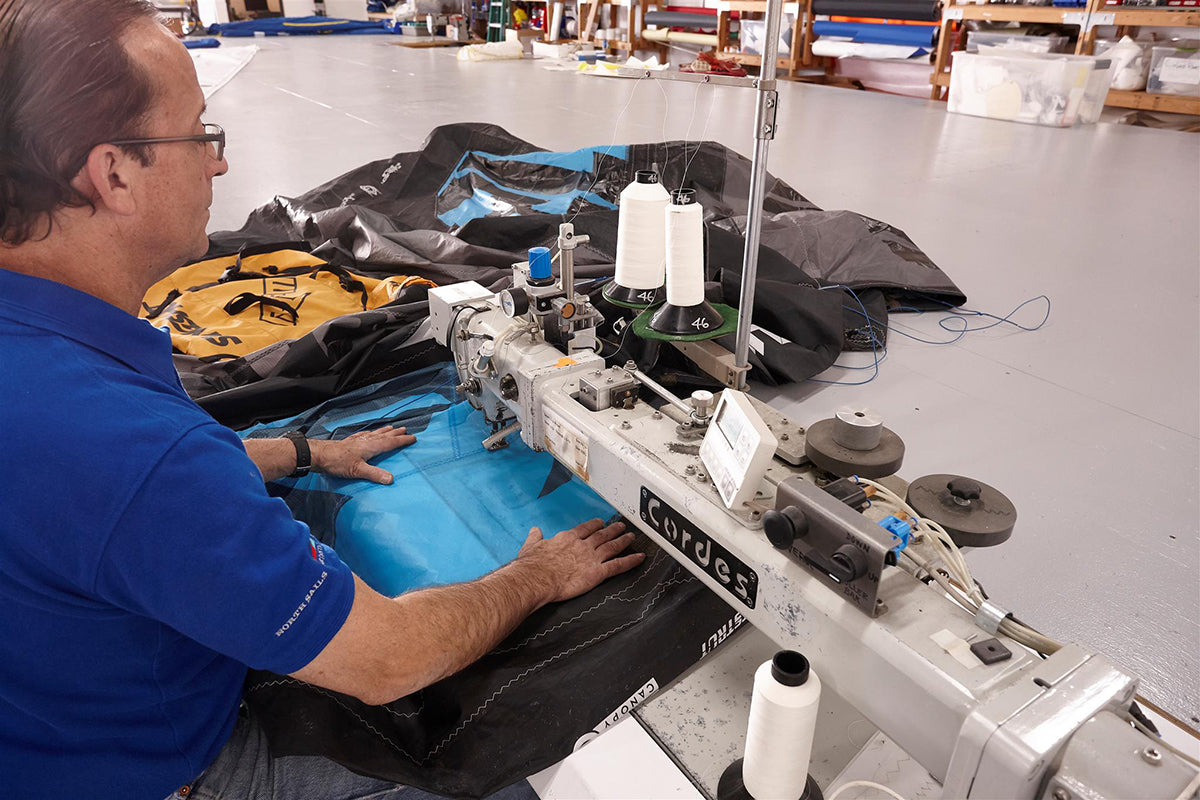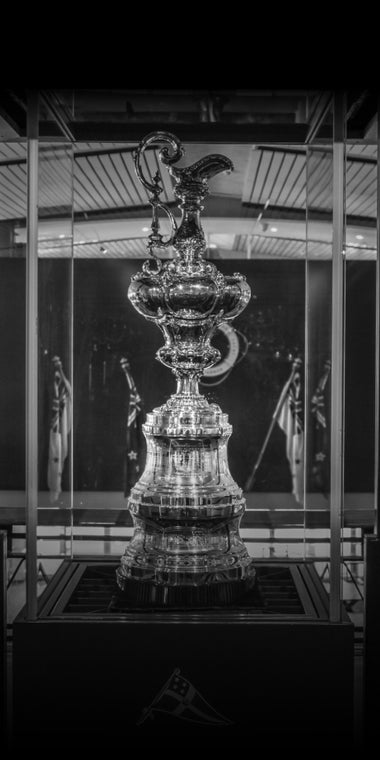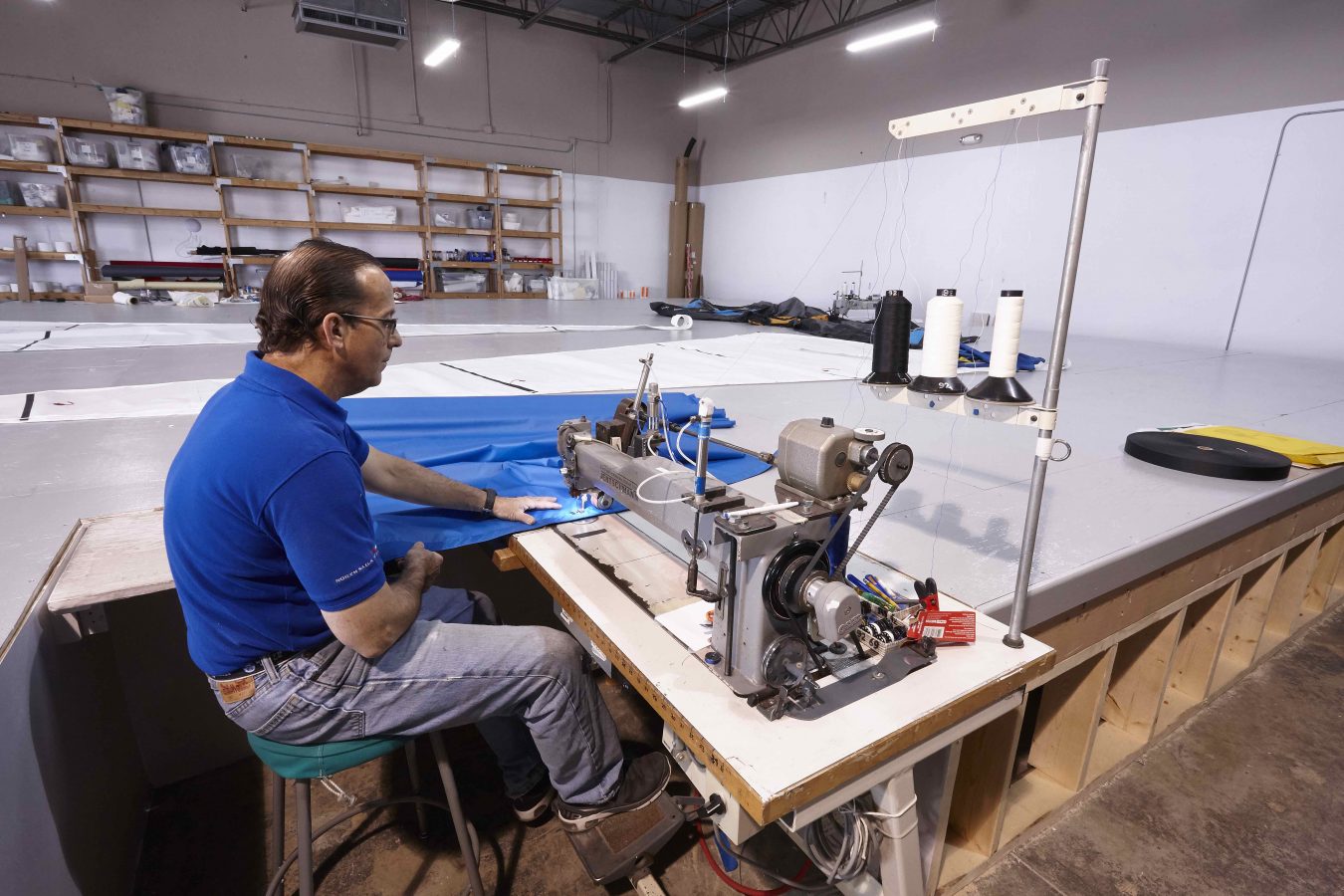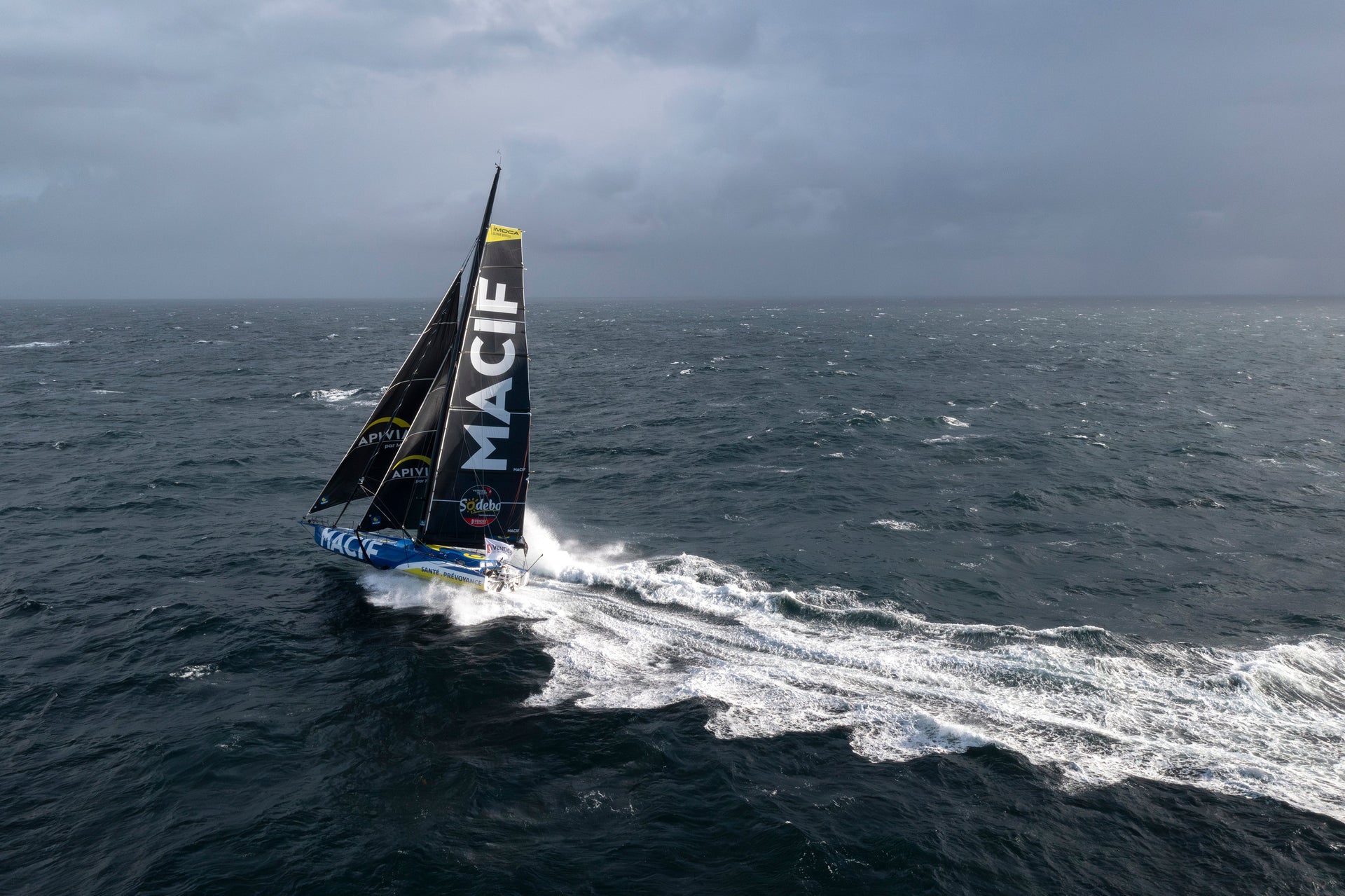LOOK INSIDE A LOFT: DETROIT
LOOK INSIDE A LOFT: DETROIT
Service Manager Bill Lesnek At Home In A New Location
 North Sails Detroit’s service manager Bill Lesnek has been building and repairing sails (and kites) in the Detroit metro area since 1980. Recently we caught up with Bill to learn why he’s excited about the new loft, the magic of customer loyalty, and why a small loft is best when it has background support from North Sails.
First though, he took us back to 1985, when he met Lowell North while helping the company founder recut a jib for the Mackinac Race. “Lowell had a number three that needed more material in the luff,” Bill explains. “We were doing a new sail, so we cut three feet off that jib and added it to the jib Lowell had—a pretty huge recut. He asked me if I sailed and I said well no, I spent most of my youth playing baseball and football.”
At Kenwood Cup in Hawaii the next year, Bill ran into Lowell again. “He says, ‘Oh yeah you're Bill from Detroit, the baseball player.’ He remembered! He is quite a character and real fun to work with.”
Bill has worked for other sailmakers since the 1980s, but he always came back to North Sails.
North Sails Detroit’s service manager Bill Lesnek has been building and repairing sails (and kites) in the Detroit metro area since 1980. Recently we caught up with Bill to learn why he’s excited about the new loft, the magic of customer loyalty, and why a small loft is best when it has background support from North Sails.
First though, he took us back to 1985, when he met Lowell North while helping the company founder recut a jib for the Mackinac Race. “Lowell had a number three that needed more material in the luff,” Bill explains. “We were doing a new sail, so we cut three feet off that jib and added it to the jib Lowell had—a pretty huge recut. He asked me if I sailed and I said well no, I spent most of my youth playing baseball and football.”
At Kenwood Cup in Hawaii the next year, Bill ran into Lowell again. “He says, ‘Oh yeah you're Bill from Detroit, the baseball player.’ He remembered! He is quite a character and real fun to work with.”
Bill has worked for other sailmakers since the 1980s, but he always came back to North Sails.
“It's the best product on the market for new sails,” he says. “And the service work, it's just a higher level of standards compared to everybody else, you know? North people care a little more, and put a little more heart and soul into what they do.”That’s helped by coordination and communication between different North lofts to help solve problems and deal with backlog. When needed, Bill and his team have gone to other lofts to help out, and they know they can count on having that help when they need it in Detroit. Working collaboratively means sharing best practices, which raises everyone’s skill level. Over the years, Bill has developed a very loyal customer base. “I was born and raised to be honest and truthful with people. A lot of people remember me too, because I've been working on their sails forever. And they know I'm consistent in what I do.”

Specialized Loft Space
Bill is excited about starting fresh in a new loft space, which he and his team have purpose-built for sailmaking. “We get to do it our way, and we've got this organized really well. It's convenient for us; we're not wandering all over the place. It will make us more productive in the long run.” For sail dropoff and pickup, they built racks right by the door. “You won't have to search all over the building for them,” he says. On the loft floor, they set up a raised table big enough for three sewing machines. “And we have a lower floor where we can spread out sails for 70 footers; we've already got a couple of inventories dropped off already. It's all at machine height, which makes the sewing a lot smoother and nicer.” It also makes for better ergonomics, because workers can perform their jobs without getting beat up. After almost four decades on the floor, Bill says, “Your knees get a little tender. ” For what he calls the “really huge sails,” there’s a section of floor that can be removed. Each sewing machine has its own specialty. “We have a three step machine which is strictly for nylon work. That's a long arm machine, so we can do big sails. We also have two everyday machines for luff tapes and edges and patches, one in the canvas room and one on the main floor. And we have a heavy duty Adler that sews through all the thick layers and webbing.” Keeping those machines running in top notch condition is a high priority, which is why they have a designated maintenance person. “We dealt with over 2000 sails last year, and a busted machine would’ve been a nightmare.”
Kite Cult
Bill works on smaller items as well. “We have a separate room just for canvas work. Boom covers or genoa socks, we could build that. I also have a cult following of kiteboarders here in the southeast area. Anytime a kite rips, they search me down and get it fixed.” According to Bill, working in a small loft as part of the worldwide North Sails company is the perfect combination. In addition to the Blue Book, which sets standards for manufacturing, there are a lot of avenues to learn from other lofts about best repair practices. “I've been doing it the same way for so long that it's just a reflex,” Bill says, “It's good to learn new procedures and different avenues.” That’s especially important as sail manufacturing evolves, because it makes it easier to keep up with technological improvements.“3Di are beautiful sails and they're durable,” he points out. “We haven't run into too many repair situations with those yet. But I know in the future it'll be nice to say, ‘We have state of the art equipment and we'll repair it to the standards of the company.’ My customers trust what I do, so they'll feel confident getting the service done.”

Short Season
Detroit’s sailing season is compressed into four months, with July’s two races to Mackinac (Chicago and Port Huron) the summer highlight. Now that boats have started to come out of the water for the winter, the loft’s focus has turned to storage and repairs. “As long as they pay their invoice within the first month, they can have free sail storage for the winter. Customers don’t have to keep them in their basements and by spring time, they're ready to go.” Thanks to the new location, Bill’s team will also be able to wash sails in-house. “We have a section in the back of the building which will be perfect, a nice addition to our business.” After almost four decades, the loft’s seasonality is predictable for Bill. “You get the proactive groups that'll see you in October, and the spring rush guys who are knocking at the door in April. We pretty much know what to expect.” As service manager, he is grateful to have a really strong team in Mike Stark and Karl Kuspa. “Mike and I work really well together. He's got a lot of experience, and we're on the same page. We all get along like a little family over here. Which is the way it should be, you know?”










